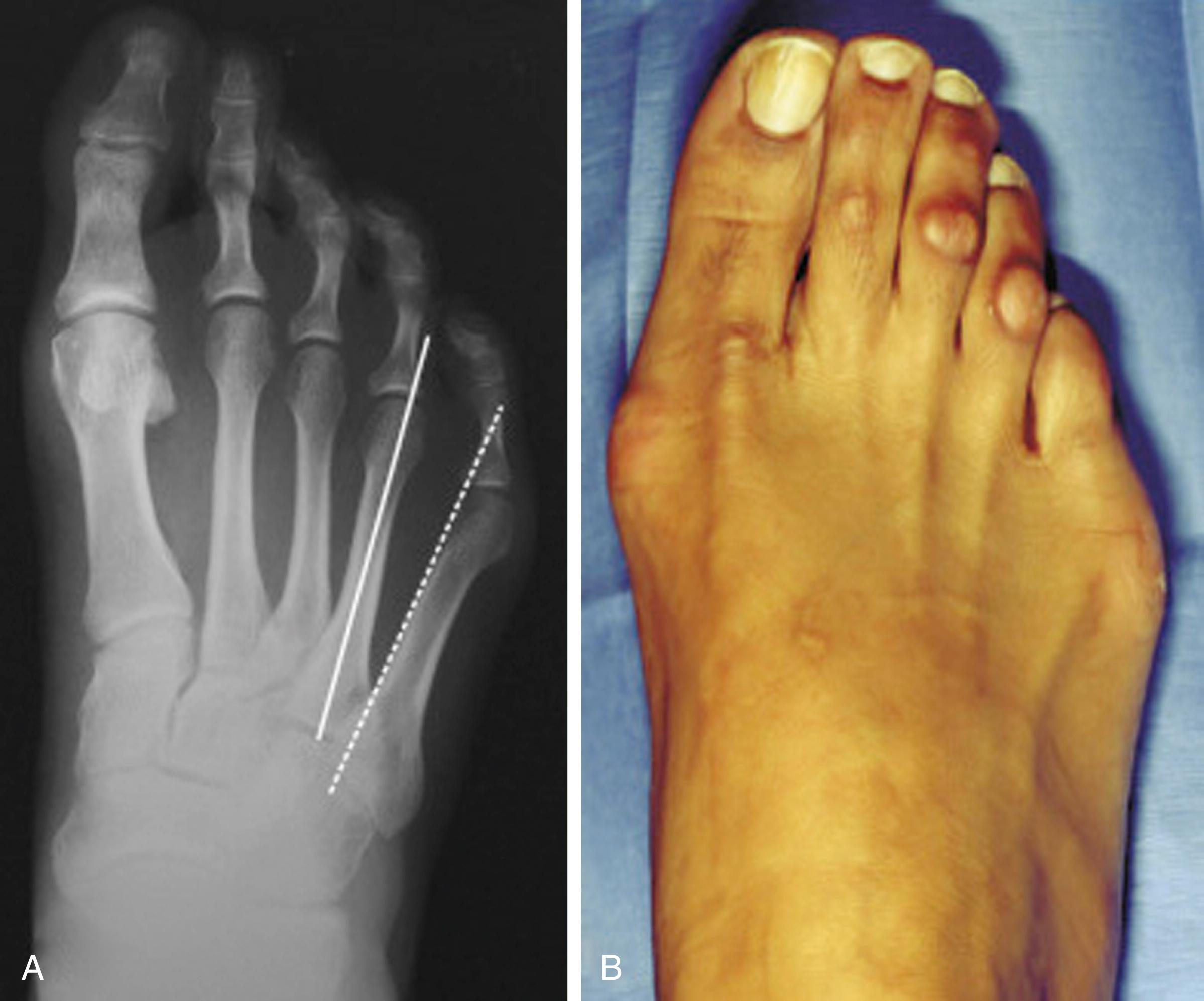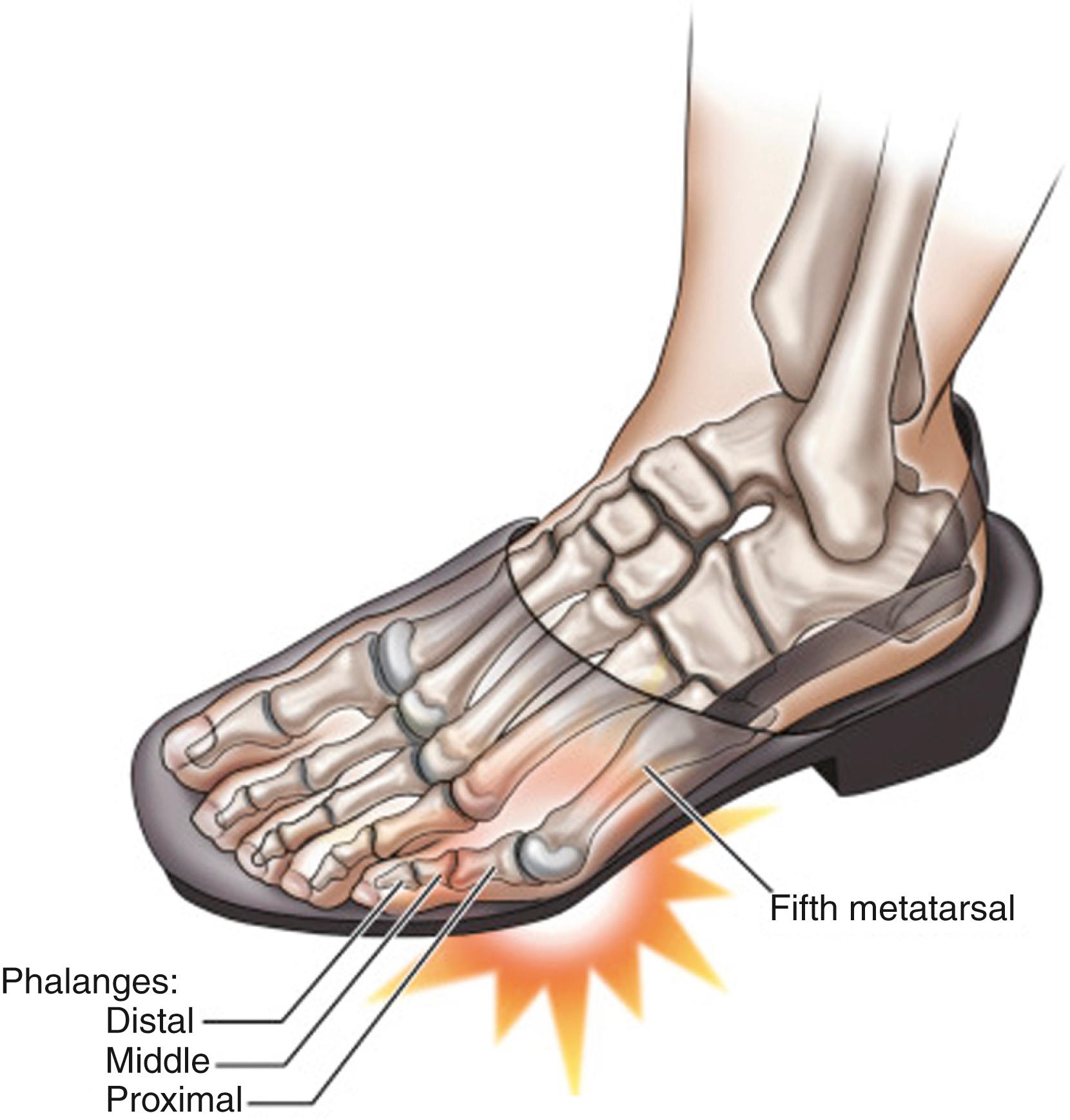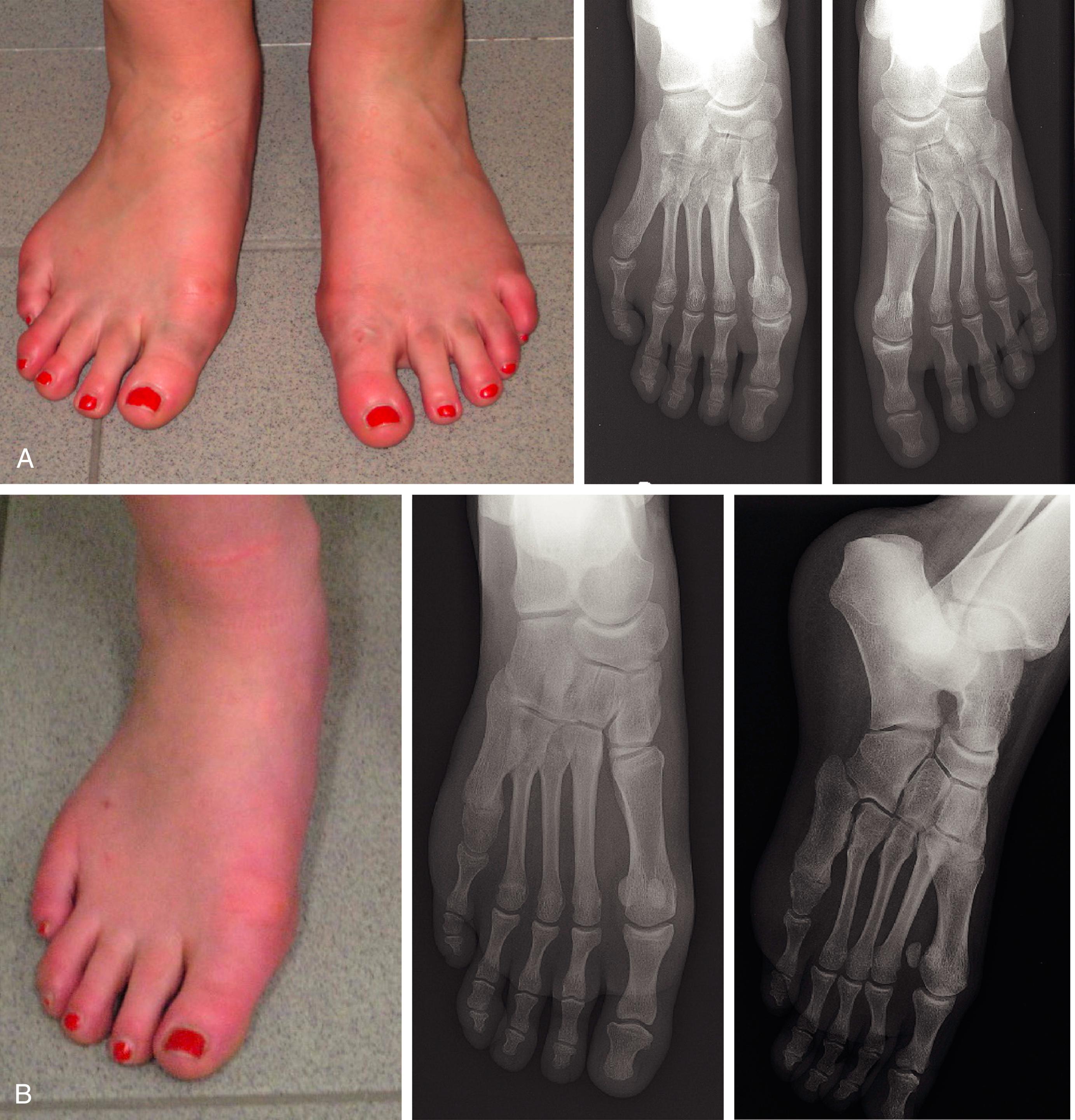Physical Address
304 North Cardinal St.
Dorchester Center, MA 02124
The term bunionette refers to a constellation of symptoms including soft-tissue swelling over the fifth metatarsophalangeal joint associated with abnormal angulation of the joint that results in a prominent fifth metatarsal head with associated medial angulation ( Fig. 194.1 ). Bunionette is also known as tailor’s bunion because tailors would sit with their legs crossed, putting pressure on the lateral portions of their feet. This deformity is analogous to the hallux valgus deformity and occurs more often in women. The development of an inflamed adventitious bursa may accompany bunionette formation and may contribute to the patient’s pain. A corn overlying the fifth metatarsal head also usually is present. The most common cause of bunionette formation is the wearing of tight, narrow-toed shoes ( Fig. 194.2 ). Wearing high-heeled shoes may exacerbate the problem.


The majority of patients presenting with bunionette pain syndrome experience pain localized to the affected fifth metatarsophalangeal joint and the inability to get shoes to fit. Walking makes the pain worse; rest and heat provide some relief. The pain is constant, is characterized as aching, and may interfere with sleep. Some patients report a grating or popping sensation with use of the joint, and crepitus may be present on physical examination. In addition to the previously mentioned pain, patients with bunionettes develop a characteristic deformity consisting of a prominent fifth metatarsal head and improper medial angulation of the fifth metatarsal.
Plain radiographs are indicated for all patients with bunionette pain (see Fig. 194.1 and Fig. 194.3 ). On the basis of the patient’s clinical presentation, additional testing may be indicated, including complete blood cell count, sedimentation rate, and antinuclear antibody testing. Magnetic resonance imaging of the toe is indicated if joint instability, occult mass, or tumor is suspected.

Become a Clinical Tree membership for Full access and enjoy Unlimited articles
If you are a member. Log in here